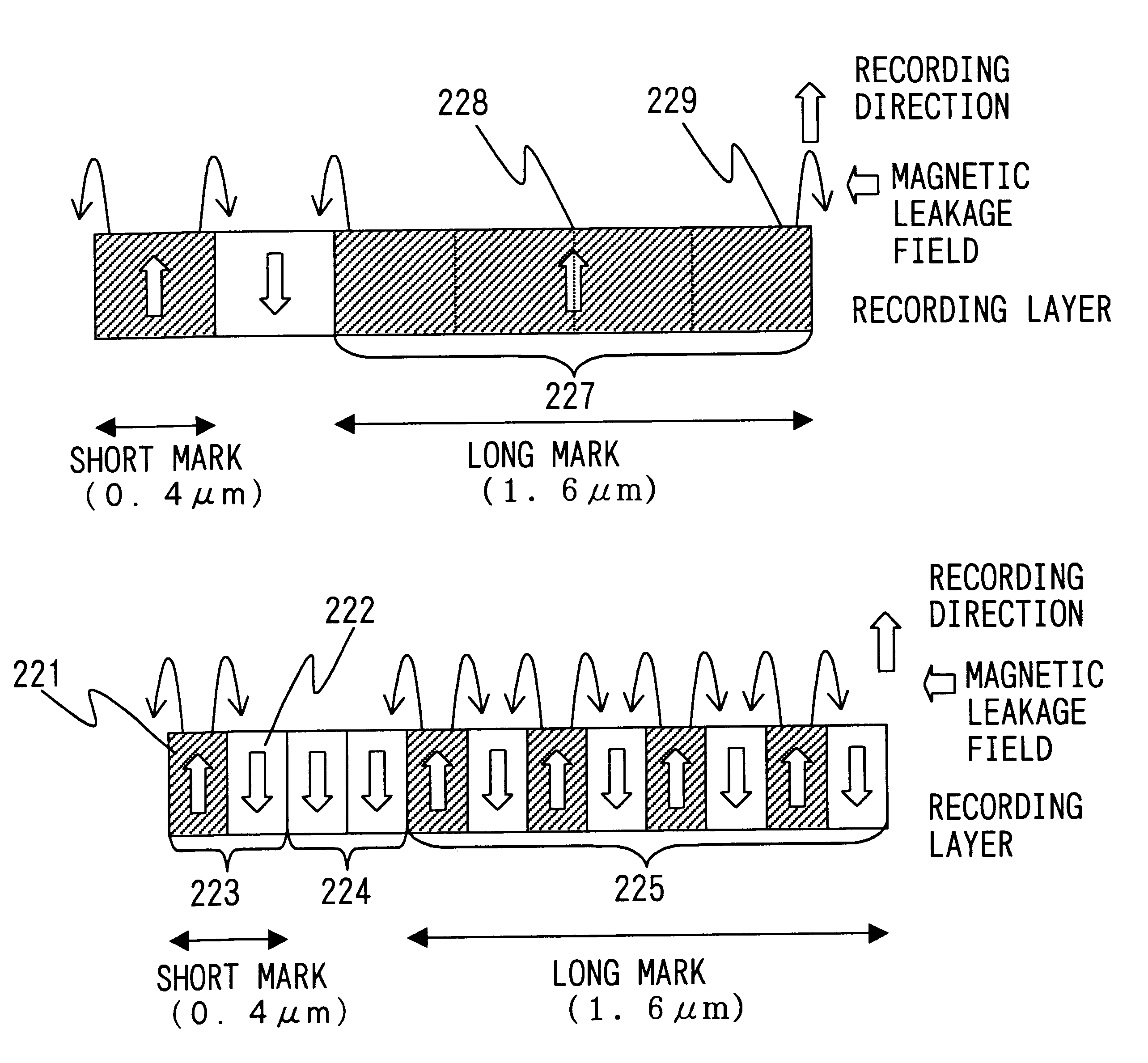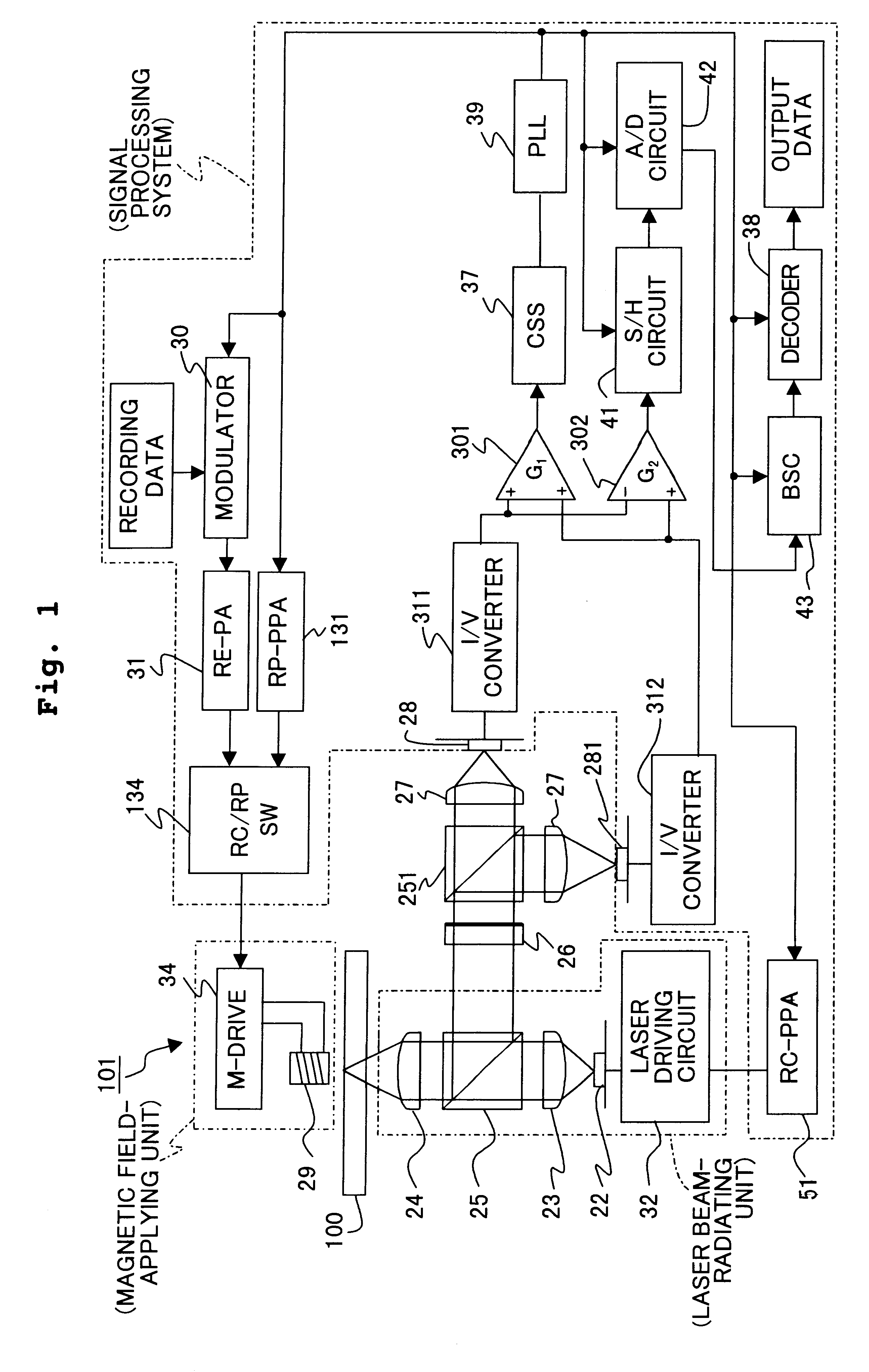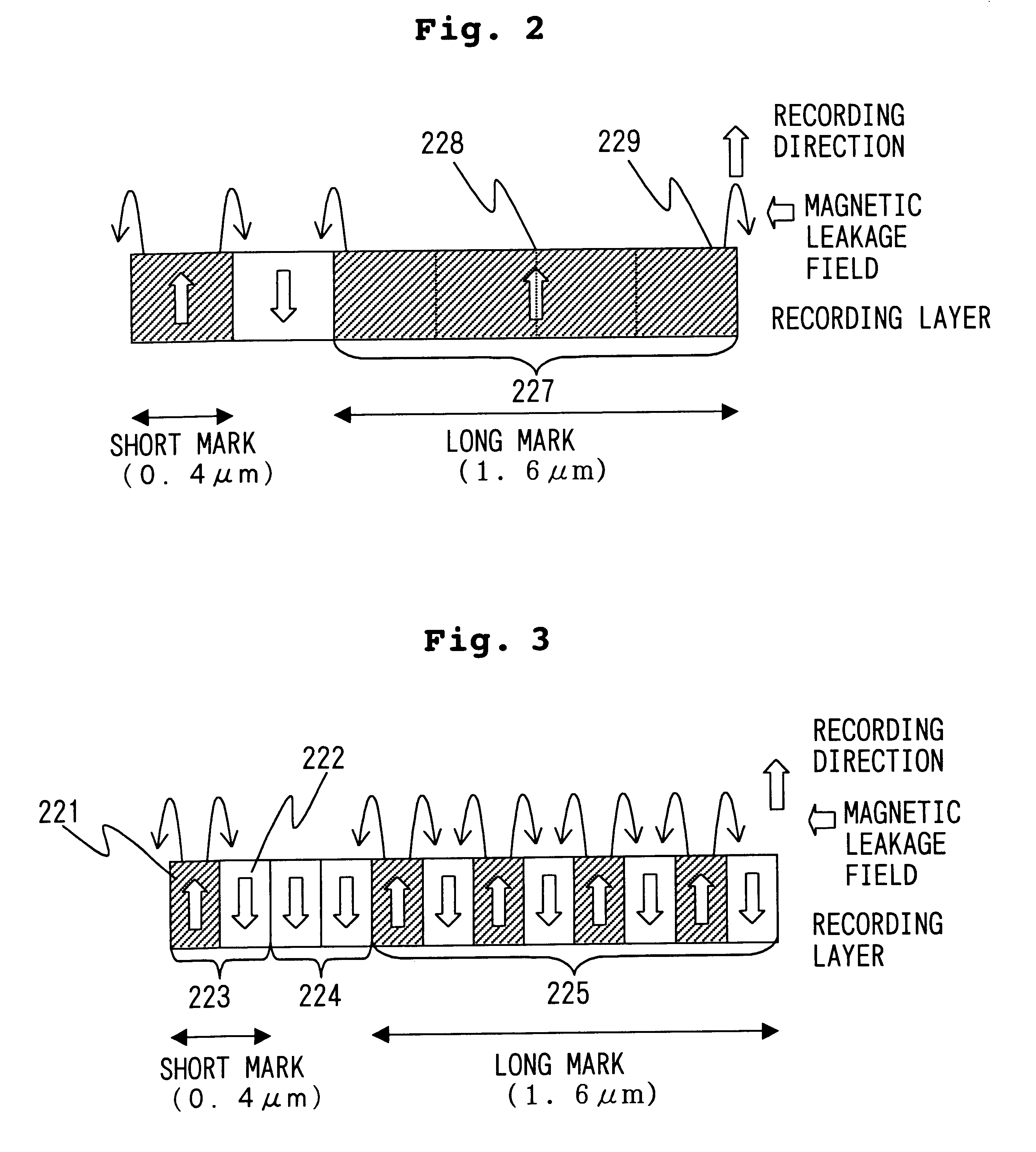Magneto-optical recording method capable of adjusting the sizes magnetic domain
- Summary
- Abstract
- Description
- Claims
- Application Information
AI Technical Summary
Problems solved by technology
Method used
Image
Examples
embodiment 1
FIG. 1 schematically shows the structure of a recorder according to the invention. The recorder 101 consists mainly of a laser beam radiating unit for irradiating a magneto-optical recording medium 100 with a light beam pulsed in synchronism with coded data, a magnetic field applying unit for applying a controlled magnetic field to the recording medium 100 during recordation and reproduction, and a signal processing system for detecting and processing a signal from the recording medium 100. The laser beam radiating unit includes a laser 22, which is connected to a laser driving circuit 32 and a recording pulse width / phase adjusting circuit (RC-PPA) 51. The driving circuit 32 receives a signal from the adjusting circuit 51, and controls the laser pulse width and phase of the laser 22. The adjusting circuit 51 receives a clock signal, which will be described later on, from a PLL circuit 39, and generates a first synchronizing signal for adjusting the phase and pulse width of a recordi...
embodiment 2
In this embodiment, a recording method according to the eighth aspect of the invention will be described in detail. FIG. 10 typically shows the dependency of recorded magnetic domain shapes of magneto-optical discs on recording magnetic field strength. In FIG. 10, a disc A is a magneto-optical recording medium including a substrate of polycarbonate, a layer of silicon nitride which is 60 nm in thickness, a recording layer of TbFeCo which is 8 nm in thickness, a recording auxiliary layer of Pt.sub.84 Co.sub.16 which is 40 nm in thickness and a layer of silicon nitride which is 60 nm in thickness. The layers are stacked on the substrate. A disc B is a magneto-optical recording medium including a substrate of polycarbonate, a layer of silicon nitride which is 60 nm in thickness, a recording layer of TbFeCo which is 8 nm in thickness, a layer of silicon nitride which is 60 nm in thickness and a layer of Al alloy which is 50 nm in thickness. The layers are stacked on the substrate. FIG. ...
PUM
 Login to View More
Login to View More Abstract
Description
Claims
Application Information
 Login to View More
Login to View More - R&D
- Intellectual Property
- Life Sciences
- Materials
- Tech Scout
- Unparalleled Data Quality
- Higher Quality Content
- 60% Fewer Hallucinations
Browse by: Latest US Patents, China's latest patents, Technical Efficacy Thesaurus, Application Domain, Technology Topic, Popular Technical Reports.
© 2025 PatSnap. All rights reserved.Legal|Privacy policy|Modern Slavery Act Transparency Statement|Sitemap|About US| Contact US: help@patsnap.com



